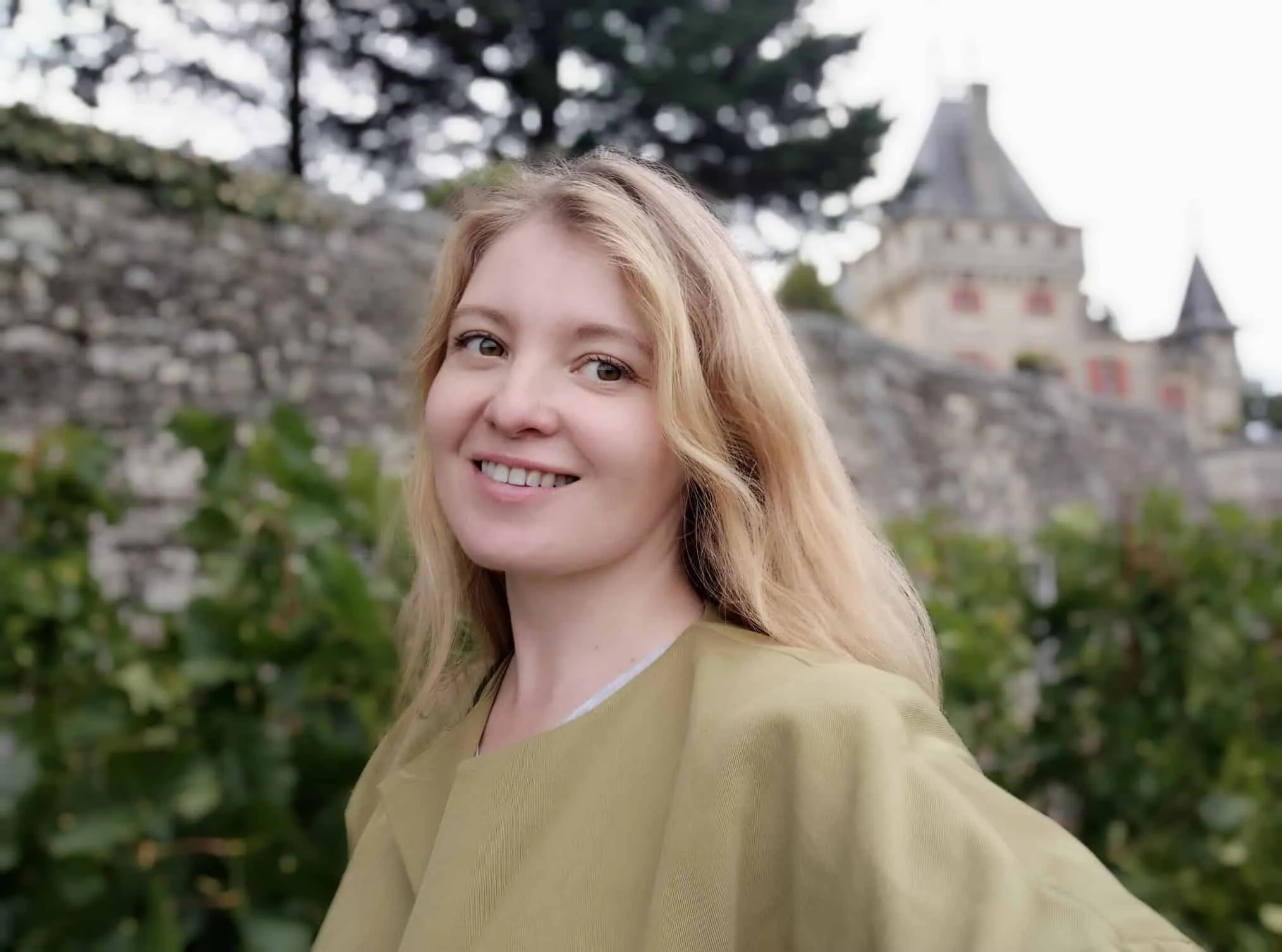Where is Provence?
Provence is a geographical region of southeastern France, which extends from the lower Rhône to the west to the Italian border to the east, and is bordered by the Mediterranean Sea to the south.
The largest city in Provence is Marseille. Other large cities are Nice, Toulon, and Avignon.
Aix-en-Provence (usually simply called Aix) is a small, classically Provençal town, about 30 kilometres (18 miles) north of Marseille, famous for being home to post-impressionist painter Paul Cézanne. Aix is a popular destination for Provence visitors.
Brignoles in the department of Var is the centre of the Cotes de Provence wine country.
Provence is easily accessible by air and well connected by train to London, Paris and other European capitals. You can use local SNCF trains and buses to move between towns.
- Nearest airports: Marseille, Avignon, Toulon, Nîmes, and Nice
- Train from London, Paris, Lyon, Lilles, Genève and Brussels to Avignon, Marseille/Aix-en-Provence, Nice
- Wine tours pick up from Marseille, Aix-en-Provence, Avignon, or your accommodation in Provence.
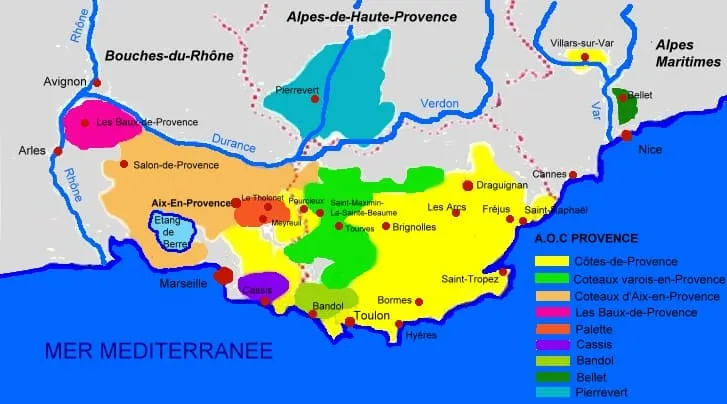
Wines of Provence
Provence has the longest winemaking history in France. The vineyards stretch out over ever-changing landscapes, around historic cities, along the Mediterranean coast, and into the mountainous plateaux.
Many ranges of hills protect vineyards from the mistral winds and provide a great variety of different site climates and soils.
Provence is mostly known for its rose wines which are considered to be the industry standard. Cotes de Provence is by far the largest appellation. Along with Coteaux d’Aix-en-Provence and Coteaux Varois en Provence it produces mostly rose wines – up to 90% of their total production.
However, if you are after red or white wines, Provence will not disappoint.
The highest quality red wines of Provence are made in Bandol on the Mediterranean coast, and in Chateauneuf-du-Pape to the north of Provence.
The regions of Luberon and Chateauneuf-du-Pape< are part of the Rhone wine region, but they are accessible and will be a great wine-tasting destination for red wine lovers traveling in Provence.
Fresh and structured red wines are made Les Baux-de-Provence on the east of the region and in the cooler uplands of northern Coteaux d’Aix-en-Provence, where Cabernet Sauvignon and Syrah blends show a distinctive freshness and structure.
Excellent reds are made in Palette to the east of Aix, where there is more Mourvèdre in the blend, reflecting a warmer climate. Other interesting red wine areas are La Londe, Pierrefeu, Fréjus and Saint-Victoire.
If you love whites, do not miss Cassis on the Mediterranean coast just east of Marseille, where vines grow surrounded by breathtaking landscapes.
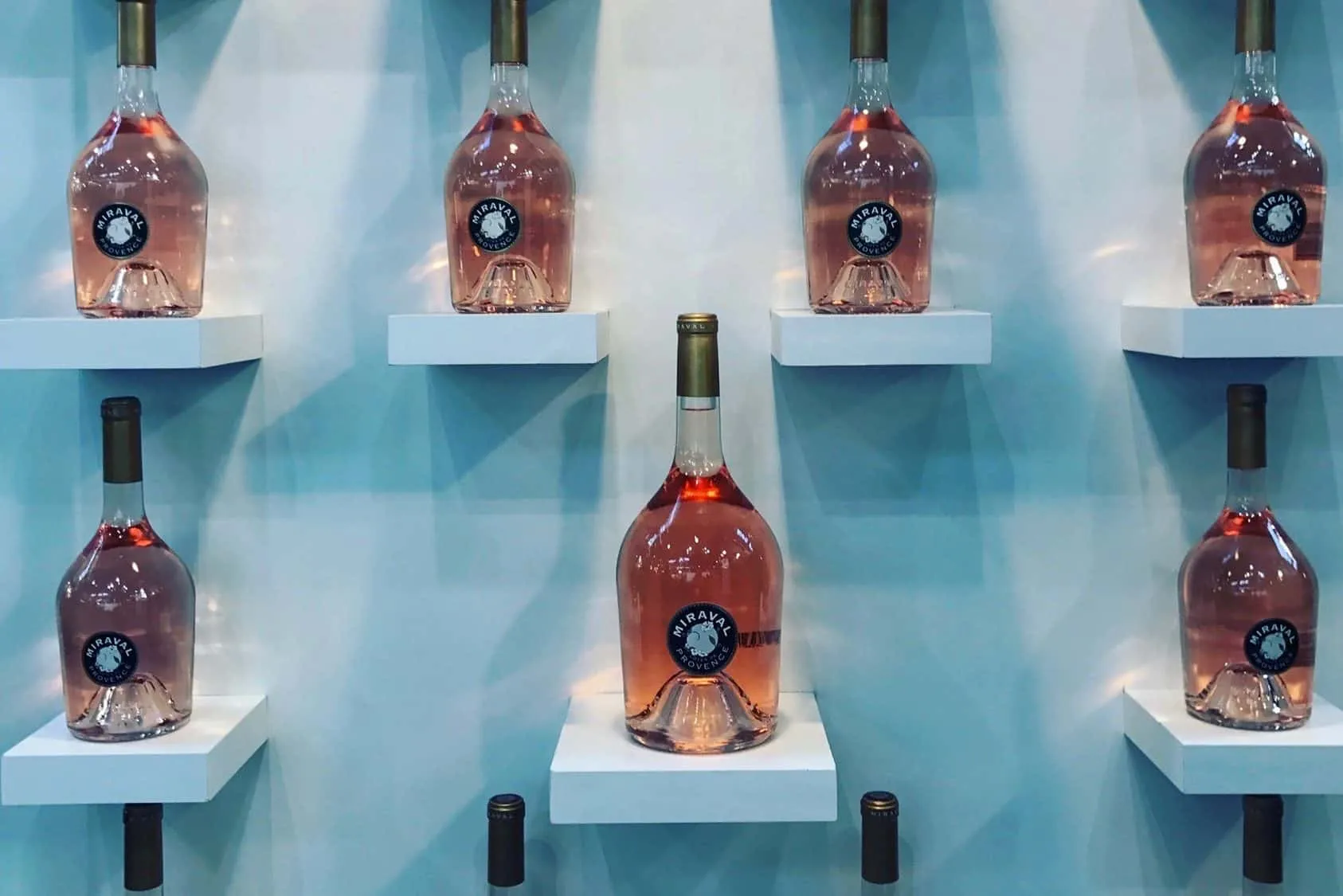
Wine Tastings and Wine Tours in Provence
When selecting your wine tasting destination in Provence, also consider how far you want to drive from your base and whether you want to visit historic villages inland, lavender fields, or explore the Mediterranean coast.
I have been working on the map of wineries in Provence and neighboring appellations that you may find handy during planning your Provence wine tasting tour.
If you are planning winery hopping, you might want to rent a car, hire a private driver, or join one of the wine tours.
Some wineries can be accessed by local train from Marseille. For example, the wineries in Cassis are within walking distance from the train station.
Reach out to the wineries and set up visit times. Between 12-30 pm and 2-30 pm most places will be closed for lunch.
Many wineries will accept drop-ins for tastings, usually between 10 am and 5 pm with a lunch break. Some wineries will have time slots for tours, while others are quite informal, however, it is always better to let them know you are planning to drop by to avoid disappointment.
As always, I recommend organized wine tours which help avoid the need for scheduling, planning, and driving.
Wine tours usually pick up from the city of Marseille, port of Marseille, Aix-en-Provence, Avignon, and Nice.
Private wine tours will pick you up from your accommodation in most villages around these cities, Luberon, the Alpilles, Toulon, Nice, and Saint-Remy de Provence.
Below, you will find more information on wine regions of Provence, wineries to visit, and the best Provence wine tours.
Map of Provence wineries
This map of wineries in Provence is not comprehensive, but I have been trying to include Provence wineries that are generally open to the public. I recommend contacting them in advance to ensure availability.
Provence wine regions
Côtes de Provence, Coteaux d’Aix-en-Provence and Coteaux Varois en Provence
… are the 3 main appellations of Provence.
There are approximately 550 wineries producing 150,000 million liters of rose wines each year.
The wine region extends over nearly 200 kilometers (125 miles) between the Mediterranean and the Alps, in the Var and Bouches-du-Rhône departments, and one village in the Alpes-Maritimes.
The landscape is unique, marked by rocky and volcanic mountain ranges, fine sandy beaches and steep terraces along the azure blue of the Mediterranean Sea.
The soil of winemaking Provence is poor, but well-drained. The Mediterranean climate is sunny, dry, and warm. The vines can expect about 2,800 hours of sun each year. The winds, the most violent and well-known of which is the mistral, cool down the vineyards and protect them from humidity-related illnesses.
The rose wines from these appellations tend to be very pale in colour, light-bodied and dry on the palate. Depending on their origin, the wines present either fruity (white fruit, citrus, exotic fruit, berries, etc.) or floral character, combined with mineral notes.
Main grape varieties: Grenache, Cinsault, Syrah, Mourvèdre, Tibouren.
Cabernet Sauvignon, Carignan, Barbaroux, Calitor are the ancillary ones that can be added to the blend but not make up more than 50%.
Perhaps, you will be interested to read my article on How to Choose a Perfect Bottle of Rose?
If you are looking to taste red and white wines of Provence, you can find them here as well.
Côtes de Provence red wines are dark in colour and have one of two types: fruity red wines that spend little time in the vat and are to be enjoyed quickly, and wines to be cellared which have complex flavours of dark berries, cacao, venison, spices and powerful, silky tannins, thanks to longer vatting times.
Côtes de Provence white wines are dry, have a bright and clear yellow colour with hints of green. They offer fruity, citrus, white blossom, balsamic, or honey flavours. The main grapes for the production of white wines are Clairette, Sémillon, Ugni Blanc, Vermentino (Rolle).
Provence wineries can be reached from Aix-en-Provence, Marseille, and coastal cities between Toulon and Nice. Tours range from half-day group tours to full-day private wine tasting tours.
Private drivers will pick you up from your accommodation in Provence.
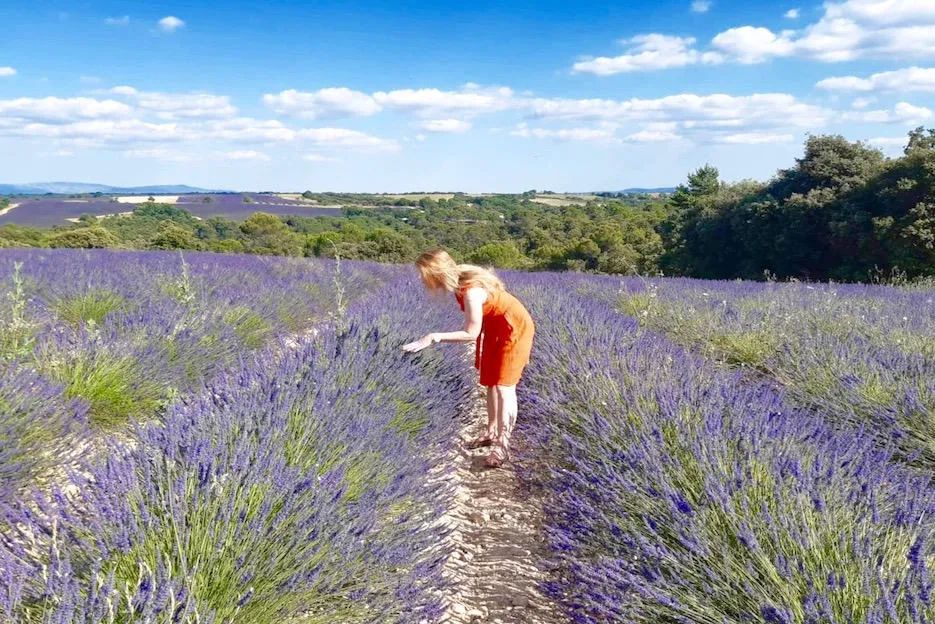
Luberon
Luberon is a mountain appellation and a part of the Rhone wine region located east of Avignon.
In the Luberon Mountains, the vines grow at an altitude of between 200 and 450 meters (650 to 1,500 feet). The terroir is rich with limestone, sand, and red clay. The climate is influenced by the Rhone and benefits from cooler temperatures of the high provençal plateaux.
The region produces full-bodied, complex, and fruity red wines as well as superb whites and rosé. Luberon is also famous for its lavender fields and magnificent hilltop villages. I highly recommend to combine wine tasting with lavender watching if you happen to be in Luberon between the end of June and early August.
Syrah, Grenache Noir, Mourvèdre, Carignan and Cinsault are the main grape varieties used in the production of reds and rosés.
Rosés come in shades ranging from very pale to very bright pink. On the palate, they are characterized by pronounced red fruit (strawberries, red currant) and by a delightful freshness.
The white wines are elegant and offer beautiful aromas of grapefruit, peach, honey, and toast. The Grenache Blanc, Clairette Blanche, Vermentino, Bourboulenc, Roussanne, Marsanne, Ugni Blanc, and Viognier grape varieties are used in the white blends.
The list of the Luberon wineries can be found here.
Wine tasting tours to Luberon wineries are offered from Marseille and Aix-en-Provence.
Les Baux-de-Provence
The village of Les Baux-de-Provence is in the heart of the Alpilles, a rocky plateau 245 meters (800 feet) high between Arles and Avignon, east of Nimes.
The magnificent Citadel by the village offers panoramic views over the Alpilles, the plain of Crau, and the Camargue, the Rhone river delta.
Although winemaking here dates from the Roman ties, the protected appellation of origin was established only in 1995. There are 12 wineries in the appellation. The production is mostly organic.
Like many other wine areas in Provence, Les Baux produces reds, roses, and whites.
The red wines of Les Baux-en-Provence are full-bodied with medium tannins. Black fruit, spices and chocolate are on the palate.
Black grape varietals include Grenache, Mourvèdre, Syrah, Cabernet Sauvignon, Cinsault, and Cournoise.
Roses are made using the bleeding method and therefore, can be quite intense in color as opposed to the pale Cotes-de-Provence wines. The wine shows aromas of crushed strawberries and red currants.
Whites are fresh and balanced with minerality and aromas of honey, exotic fruits, peaches, and citrus, with a slight hint of bitterness. White grape varieties here include Grenache Blanc, Vermentino, Clairette, Roussanne, Marsanne, Bourboulenc, and Ugni Blanc.
During your visit, do not miss to taste local olive oils, especially the ones marked AOP Vallées des Baux-de-Provence.
Wine tours to Les Baux-en-Provence pick up from Marseille, Avignon, and Aix-en-Provence. Many wine tours also stop at the olive oil farms and in Saint Rémy de Provence, a historic village built on one of the oldest archeological sites in Europe.
You can arrange your visits and wine tastings at Les-Baux-de-Provence with the wineries by calling them directly. Here is the list of wineries in Les Baux-de-Provence.
Also, the video above shows interesting wineries to visit in Les Baux-de-Provence.

Bandol
Sheltered by the massif of Sainte Baume to the north the Bandol vineyard descends in terraces towards the Mediterranean Sea in a magnificent amphitheater of pine and oak forests.
The terroir of 1,600 hectares (4,000 acres) faces south and benefits from nearly 3,000 hours of sun exposure a year.
The sea protects the vineyards from extreme temperatures, while on the heights, the forests covering the hills block the cold northerly winds. The Mistral wind ensures a perfectly healthy climate is maintained, even after heavy rains.
The unique terroir of Bandol includes 8 towns in the department of Var: Bandol, Le Beausset, Le Castellet, La Cadière d’Azur, Saint Cyr-sur-mer, Sainte-Anne d’Evenos, Sanary-sur-mer et Ollioules.
Bandol produces premium structured dry full-bodied reds, well-rounded and long-lived roses and complex aromatic whites.
Bandol is a star appellation of Provence mainly for the red wines made from Mourvèdre, a late-ripening variety.
Rich in tannins, Bandol’s red wines can age as much as those of Bordeaux. Mourvèdre is typically combined with Grenache and Cinsault for both red and rose blends.
Bandol rosés made by direct pressing are well-structured, refined pale-colored with delicate salmon hues. They are to be drunk in their youth, however, the presence of Mourvèdre often creates long-lived and complex rosés which allows a great variety in food pairings.
White wines are produced in very low quantities. Clairette, Ugni Blanc, and Bourboulenc are the base of the varietal mix. Aromas of white blossom, citrus, and exotic fruits prevail in Bandol whites.
If you are in the region by car, visit Bandol wineries by arranging tastings with wineries directly. The list of the Bandol wineries can be found here.
If you get on a wine tour from Marseille or Aix-en-Provence you can visit Bandol and Cassis (which I highly recommend) on a full-day tour or just Bandol in half a day.
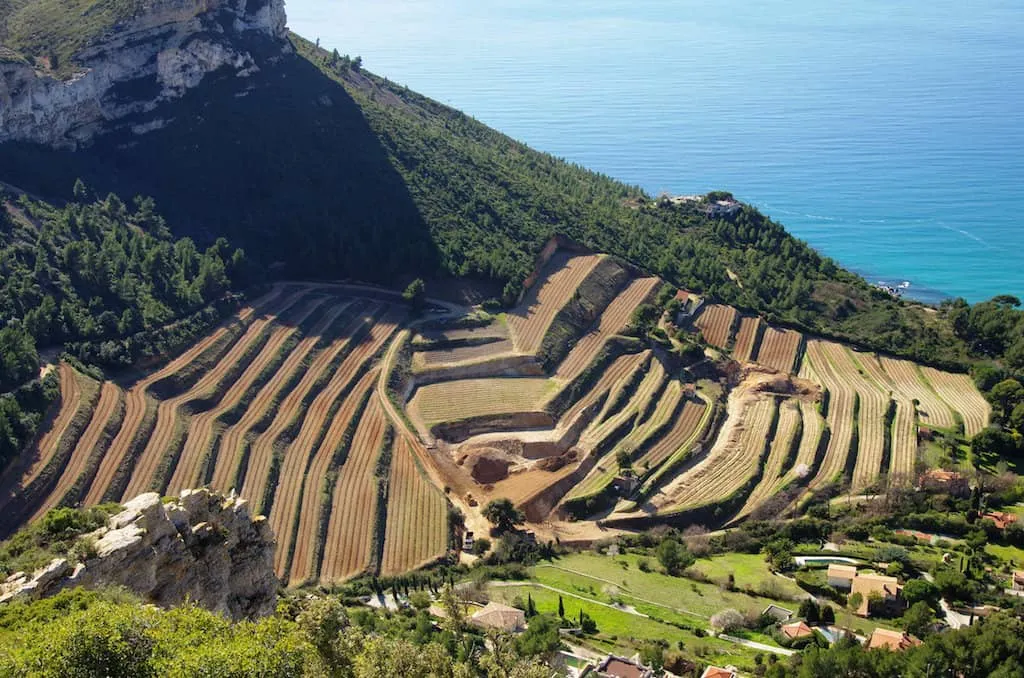
Cassis
2,600 years ago, the Greeks planted the first grape-vines…
Today, Cassis is a small and charming resort town for the rich of France just a few miles east of Marseille. Cassis is the only French appellation of protected origin to be fully integrated into the National Park “Parc National des Calanques” on the Mediterranean coast.
If you have a few free days in Provence, it is an excellent place to stay, explore the Calanques by boat or on foot, enjoy the most beautiful landscapes of the South of France and, of course, go for a wine tasting.
Created in 1936, Cassis is one of the first French appellations and one of the few areas in Provence producing mainly white wine. As production is relatively low and incredibly popular locally, Cassis wines can be hard to come by outside the region.
Vineyards in Cassis cover only 215 hectares (530 acres) planted on narrow terraces known as “restanques“. The vines are sheltered by Cap Canaille, the tallest coastal cliff in France, plunging down from a height of 400 meters (1,300 feet) into the Mediterranean.
There are only 12 wineries producing approximately one million bottles of mainly white wines (71%), some rose wines (26%), and a small amount of reds.
Today, white wines use Marsanne, Ugni Blanc, Clairette, Sauvignon Blanc, however, in the past, before the phylloxera disaster stroke in the 1860s, Muscat grapes were the most common.
The wines made in dry fresh style with minerality and aromas of citrus, white blossom, and honey. They are remarkably balanced and can be cellared for 2 to 5 years.
Many of the wineries are certified organic. Expect to pay approximately 15 to 18 euros for a bottle of white Cassis wine, with special Cuvee going up to 25 euros.
The wineries of Cassis are located in and around the town and they are quite easy to visit by foot from the town and the harbor, as well as from the train station. Vineyards are planted in spectacular locations on the Mediterranean coast, so besides wine tasting, they make a beautiful spot to visit.
If you are in Cassis, you can visit arrange wine tastings directly with the wineries. Clos Sainte Magdeline was my favorite with the most breathtaking views opening from the vineyard and rose and whites of incredible freshness.
If you like to visit both Bandol and Cassis, you can do that on one of the wine tours from Marseille or Aix-en-Provence. Wine tours run for half-day or full-day.
Check out my article about a day tour we took from Marseille to Cassis and a wine tasting in Cassis.
Chateauneuf-du-Pape
Situated on the east bank of the Rhone, this area was the first in France to have the status of the appellation of protected origin.
Chateauneuf-du-Pape is mainly known in the world for its diverse full-bodied richly textured red wines with concentrated red fruit flavors. 55 wineries are included in the appellation.
Winemakers can choose from a large number of grape varieties (13 in total), however, Grenache dominates the blend. There is a wide variety of styles in Chateauneuf-du-Pape red wines, many are based on Mourvedre and Syrah.
A small quantity of white wines is made in Chateauneuf-du-Pape.
There is a lot to see in the village of Chateauneuf-du-Pape, including the remains of the 14th-century papal castle, the 12th-century Hers Tower, Medieval chapels, churches, and the Winemakers Museum.
There are also numerous opportunities to taste wines in the cellars situated right in the village. Alternatively, make appointments with the wineries nearby or hop on a wine tour from Avignon or Marseille.
Provence wine tours
Enjoy Provence!


